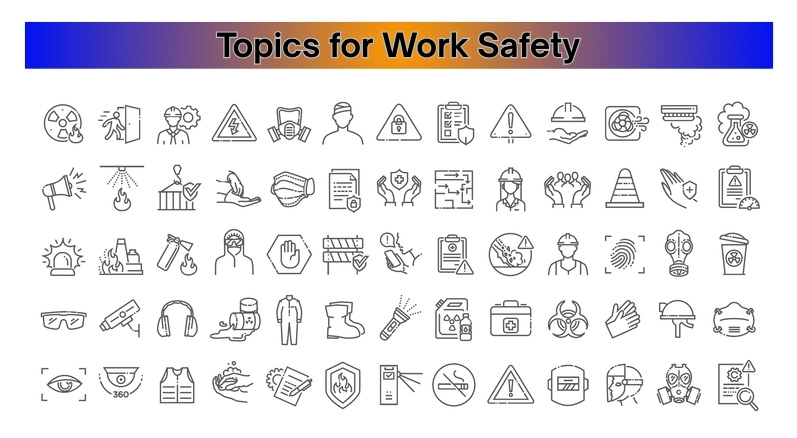What is OSHA?
OSHA stands for ‘The Occupational Safety and Health Administration (OSHA)’. it is a pivotal regulatory agency within the United States Department of Labor, established by Congress through the Occupational Safety and Health Act (OSH Act) and signed into law by President Richard M. Nixon on December 29, 1970. OSHA’s primary mandate is to ensure safe and healthy working conditions for American construction workers by developing and enforcing workplace standards.
This mission encompasses conducting workplace inspections, setting regulations, and providing training, outreach, education, and assistance to both employers and employees. Additionally, OSHA enforces various whistleblower statutes to protect employees who report unsafe practices. Studies have demonstrated that OSHA’s interventions, such as safety inspections, effectively lower injury rates and associated costs without negatively impacting employment, business sales, credit ratings, or the viability of firms.
These efforts highlight OSHA’s critical role in developing a safer work environment across diverse industries.
History and Background of OSHA
Before OSHA, workplace safety legislation was almost nonexistent. Before the workers’ compensation movement in the late 19th and early 20th centuries, safety standards in workplaces were very low. The conversation on workers’ rights in Congress led to initial protective laws, but these were largely insufficient.
By 1970, over 14,000 work-related fatalities highlighted the need for stronger regulations. In response, President Lyndon Johnson proposed workplace safety legislation, which was eventually enacted by President Richard Nixon. Nixon signed the Occupational Safety and Health Act in December 1970, with the law coming into effect in April 1971, marking a new era in workplace safety.
OSHA initially struggled to establish clear safety regulations until Dr. Eula Bingham, Assistant Secretary of Labor, streamlined and clarified these standards under President Jimmy Carter’s support. Despite facing opposition from big businesses and Congress, Dr. Bingham’s efforts significantly improved OSHA’s effectiveness. Since then, OSHA has continuously refined its regulations to enhance workplace safety across various industries, particularly focusing on high-risk sectors like construction and manufacturing. Today, OSHA’s regulations have dramatically reduced workplace fatalities and injuries, developing a safer and more productive work environment.
Mission and Objectives of OSHA
OSHA’s mission is to ensure safe and healthy working conditions for American workers. It achieves this by setting and enforcing standards, protecting the employees, offering training and educational programs, and supporting state OSHA programs to maintain a consistent national system of workplace safety and health protections.
Regulatory Authority of OSHA
OSHA, a division of the U.S. Department of Labor, is overseen by the Assistant Secretary of Labor for Occupational Safety and Health. This administrator reports to the Secretary of Labor, a cabinet member under the President, highlighting OSHA’s integral role in federal workplace safety oversight.
Coverage and Compliance under OSHA
Within OSHA regulations, most of the private sector employers along with their workers are included. It also included employers and their employees from public sector. Exceptions include self-employed individuals, immediate family members of farm employers, and workplaces regulated by other federal agencies. Employers covered by OSHA are required to comply with its standards and maintain a workplace free from recognized hazards that can cause death or serious physical harm.
Types of OSHA Standards
OSHA standards are legally binding rules that employers must follow to protect workers from various hazards. These standards regulate exposure to harmful chemicals, mandate safe practices, and require proper material handling and hazard monitoring. OSHA standards are categorized into four broad areas:
- General Industry Standards: Applicable to most industries, addressing a wide range of workplace safety issues.
- Construction Standards: Tailored to the construction industry, focusing on unique hazards in construction work.
- Maritime Standards: Covering maritime operations, including shipyards, marine terminals, and longshoring.
- Agriculture Standards: Aimed at protecting farm workers by addressing specific hazards in agricultural settings.
These comprehensive regulations ensure safer working environments across various sectors.
Enforcement Actions by OSHA
OSHA enforces compliance through a combination of inspections, citations, and penalties. Inspections may be initiated based on complaints, referrals, or incidents of severe injuries or fatalities. During an inspection, OSHA inspectors evaluate workplace conditions and practices, and if violations are found, citations and fines are issued. Employers are given an opportunity to contest citations and penalties, but failure to comply can result in increased fines and legal action.
Training and Outreach Programs
Training and outreach are integral components of OSHA’s efforts to enhance workplace safety. OSHA offers various programs, including OSHA-10, OSHA 30-hour courses and on-site construction Training.
what is OSHA 10-Hour and what is OSHA 30?
These courses actually provide workers and supervisors with a basic understanding of workplace safety and health hazards. The OSHA 10-hour course is designed for entry-level workers, while the OSHA 30-hour course is more comprehensive, targeting supervisors and workers with safety responsibilities.
What is an On-Site Consultation Program?
On-Site Consultation Programs are small and medium-sized businesses can receive free consultation services to identify and correct potential hazards.
Recordkeeping Requirements under OSHA
Employers covered by OSHA are required to maintain records of work-related injuries and illnesses. These records help OSHA identify hazards, evaluate safety standards, and conduct research on workplace safety. The key components of OSHA’s recordkeeping requirements include:
- OSHA Form 300: Log of Work-Related Injuries and Illnesses.
- OSHA Form 301: Injury and Illness Incident Report.
- OSHA Form 300A: Summary of Work-Related Injuries and Illnesses, which must be posted in a visible location within the workplace
Impact of OSHA on Workplace Safety
Since its establishment, OSHA has had a profound impact on improving workplace safety. The agency’s regulations and enforcement actions have significantly reduced the incidence of workplace injuries, illnesses, and fatalities. Employers are more aware of their responsibilities, and workers are better informed about their rights to a safe workplace. OSHA’s influence extends beyond the U.S., as its standards often serve as a model for other countries’ occupational safety and health programs.
OSHA Partnerships and Collaborations
OSHA collaborates with various organizations to promote workplace safety. These partnerships include alliances with trade associations, labor unions, and educational institutions. Such collaborations facilitate the sharing of knowledge, resources, and best practices. OSHA’s Voluntary Protection Programs (VPP) recognize employers and workers who have implemented effective safety and health management systems, developing a cooperative relationship between OSHA, employers, and employees.
Future Challenges and Opportunities for OSHA
As workplaces evolve, OSHA faces new challenges and opportunities. Emerging industries, technological advancements, and changing workforce demographics require continuous adaptation of safety standards. The increasing prevalence of remote work, gig economy jobs, and the use of advanced technologies like artificial intelligence and robotics present both challenges and opportunities for OSHA. The agency must stay ahead of these trends to ensure comprehensive and effective safety regulations
Conclusion: Ensuring Safe and Healthy Workplaces
OSHA has been instrumental in transforming workplace safety since its inception in 1970. By setting and enforcing standards, protecting employees, and offering extensive training and outreach, OSHA has significantly reduced workplace injuries and fatalities. Its regulations cover a wide range of industries, ensuring comprehensive safety measures across the board.
OSHA’s partnerships, enforcement actions, and continuous adaptation to emerging workplace challenges underscore its commitment to protecting American workers. As industries evolve, OSHA’s role remains crucial in maintaining safe and healthy working conditions, developing a culture of safety, and supporting a productive workforce.







